June 18, 2025 | 20:40 GMT +7
June 18, 2025 | 20:40 GMT +7
Hotline: 0913.378.918
June 18, 2025 | 20:40 GMT +7
Hotline: 0913.378.918
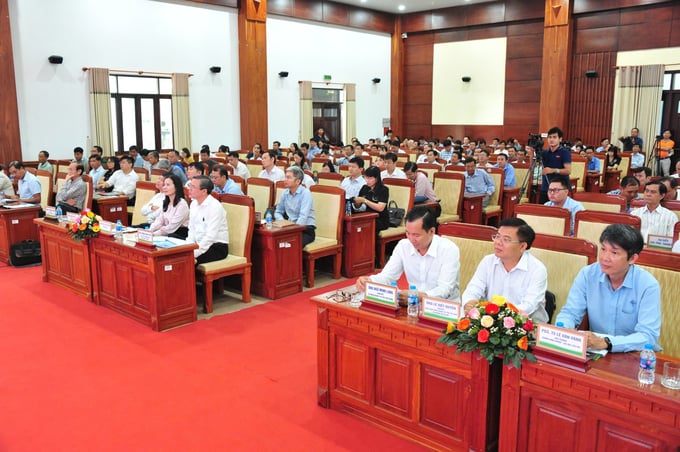
On the morning of October 25, the seminar "Linking rice value chains to contribute to the implementation of the project for Sustainable development of 1 million hectares of high-quality rice in Hau Giang" was held. Photo: Le Hoang Vu.
On the morning of October 25, Hau Giang Provincial People's Committee, in collaboration with Vietnam Agriculture Newspaper, organized a seminar titled "Linking rice value chains to contribute to the implementation of the project for Sustainable development of 1 million hectares of high-quality rice in Hau Giang".
At the seminar, the presentation on "Some measurement results from models and the direction for implementing measurement, reporting and verification activities" provided insights into the effectiveness of high-quality, low-emission rice production models.
These findings not only demonstrate the feasibility of modern farming methods but also lay a solid foundation for guiding the development of future models. By implementing MRV (Monitoring, reporting and verification) practices, Hau Giang province can enhance the accuracy of assessing the environmental impacts of production activities. This, in turn, will promote the adoption of improved measures for sustainable agricultural practices.
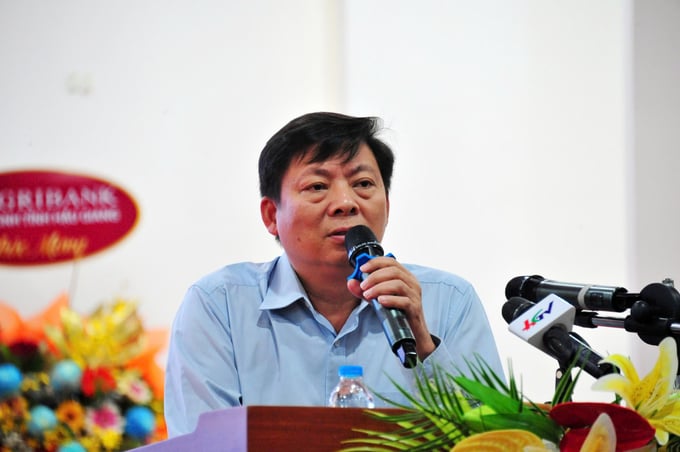
According to Associate Professor Dr. Mai Van Trinh, Director of the Agricultural Environment Institute, the current measurement activities for the models are being implemented effectively, with the development of six mapped models. Photo: Le Hoang Vu.
According to Associate Professor Dr. Mai Van Trinh, Director of the Agricultural Environment Institute, the current measurement activities for the models are being implemented effectively, with the development of six mapped models. When a cooperative registers to participate in the model, the MRV team members will provide detailed guidance tailored to each specific model.
At present, the Agricultural Resources Institute is working in conjunction with local officials to establish both the models and an online MRV information collection system to facilitate data calculations. As local MRV personnel enter data into the system, automatic calculations will be executed to support the measurement process.
Moreover, during the training sessions, local MRV officials will receive comprehensive instructions, with particular emphasis on two critical stages: the first water withdrawal and the second water withdrawal. The process involves three levels of participation: central-level MRV officials, managed by the Agricultural Resources Institute; cooperative MRV officials; and commune-level MRV officials. The responsibility of the cooperative MRV officials is to carry out daily measurements and report these findings through the software, including any necessary documentation. Meanwhile, officials at both the district and provincial levels will oversee and verify all MRV activities conducted by the cooperatives.
One noteworthy outcome is that the 50-hectare model at Hung Loi Cooperative in Soc Trang has successfully reduced its emissions to just 9 tons of CO2, compared to 16.5 tons prior to the implementation of the model. This significant reduction demonstrates a key principle: when the baseline (defined as the greenhouse gas emission level used as a benchmark for comparing future emissions) is low, the potential for emission reductions is correspondingly higher. Therefore, it is crucial to prioritize efforts aimed at reducing baseline emissions before rolling out the model, while also strictly following the established methods for emission reduction.
Mr. Mai Van Trinh highlighted that the irrigation infrastructure associated with these models is currently facing numerous challenges. The density of drainage canals across the agricultural fields remains insufficient, and the distance between the irrigation canals and drainage canals is still considerable. This situation adversely affects the overall efficiency of water management practices. Furthermore, there is a lack of reference data regarding technology and ecological zoning, which complicates the application of effective solutions. Additionally, the timing and efficiency of water withdrawals are heavily influenced by local weather conditions, as well as the specific topographical characteristics of each model area.
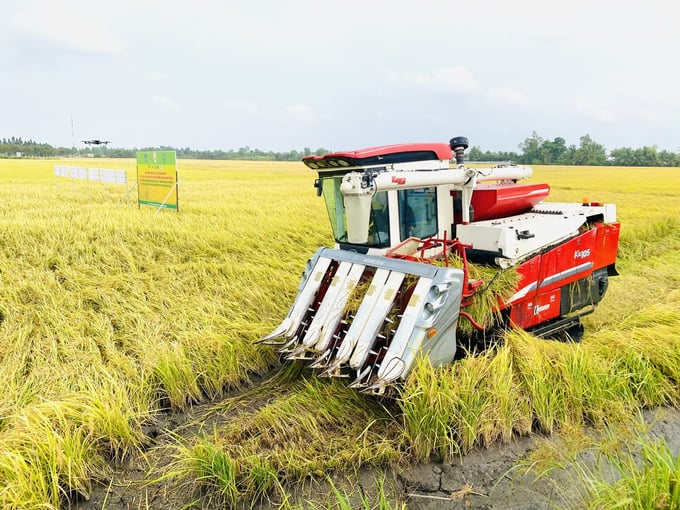
Farmers should be aware that applying more nitrogen fertilizer will increase N2O emissions, while using laser leveling technology can lead to increased CO2 emissions. Photo: Le Hoang Vu.
One of the effective strategies is to utilize short-duration rice varieties, which helps shorten the duration of flooding for the crops. Additionally, implementing a proper water management regime before and during the growing season is vital. This can involve techniques such as mid-season water withdrawal or alternating between wet and dry irrigation. According to MRV principles, irrigation should only be reinitiated once the water level has fallen to -15 cm.
In terms of straw management and organic fertilization, if farmers choose to adopt the deep incorporation method, Mr. Mai Van Trinh recommends applying it more than 30 days prior to the start of the new growing season. This approach allows the straw enough time to decompose properly, leading to enhanced soil quality and fertility.
Farmers should also take into consideration that the over-application of nitrogen fertilizer can significantly increase N2O emissions. Additionally, utilizing laser leveling technology may contribute to higher CO2 emissions, which could lead to point deductions during the evaluation process. Each agricultural model will be assigned a unique identifier (referred to as "1 spot") to facilitate tracking. When farmers need to inspect their fields, they can simply click on this identifier, and the GPS system will navigate them directly to that location, thus enhancing the effectiveness of both management and monitoring efforts.
The Director of the Agricultural Environment Institute stresses that achieving emission reduction goals requires strict compliance with cultivation practices and measurement protocols. It is vital to closely control nitrogen fertilizer application, ensuring that it does not exceed the regulated levels set forth in the guidelines to prevent detrimental effects on the environment and the health of the crops. Moreover, he highlights the importance of minimizing the use of machinery to reduce CO2 emissions.
Ensuring at least two successful water withdrawals is another critical factor. Mr. Mai Van Trinh advocates for conducting a minimum of three successful withdrawals to maximize the effectiveness of water management strategies. Furthermore, he advises against deep incorporation of fresh straw; instead, farmers should focus on collecting and composting fertilizers directly in the fields to optimize soil nutrients. Lastly, it is essential to manage tidal influences and prevent water from entering the fields during periods of reduced water use. By adhering to these guidelines, farmers can protect crops from negative impacts and improve sustainability while enhancing crop productivity.
Translated by Phuong Linh
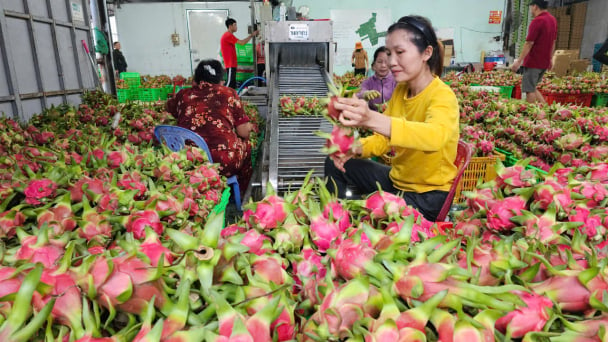
(VAN) According to the Binh Thuan Department of Industry and Trade, in the first five months of 2025, Binh Thuan's dragon fruit export turnover increased by 20.65% compared to the same period last year.
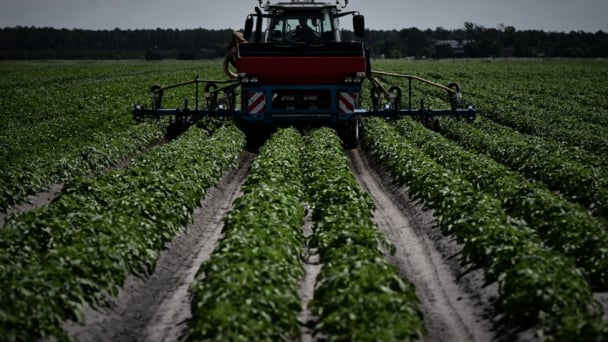
(VAN) EU countries on Thursday gave final approval to new tariffs on fertilizer imports from Russia, a move aimed at cutting off revenue that could support Moscow’s war in Ukraine, despite concerns from European farmers.

(VAN) The working delegation from the Ministry of Agriculture and Environment conducted an important trip to the Netherlands to strengthen strategic partnerships and sustainable development in the agricultural sector.

(VAN) The letter ‘A Plea from the Ocean’ not only evokes emotion but also awakens the human conscience to the responsibility of protecting life on Earth.

(VAN) The Department of Agriculture in South Africa has announced the country’s first mass vaccination of poultry to prevent local birds from contracting avian influenza.

(VAN) Establishment of the Mekong Delta Regional Agricultural Linkage Center, aiming for a closed value chain, deep processing, trading platforms, and international market connectivity.

(VAN) Gia Lai province has recently recorded 460 rare species of animals and plants, contributing to forest conservation and biodiversity planning in the region.